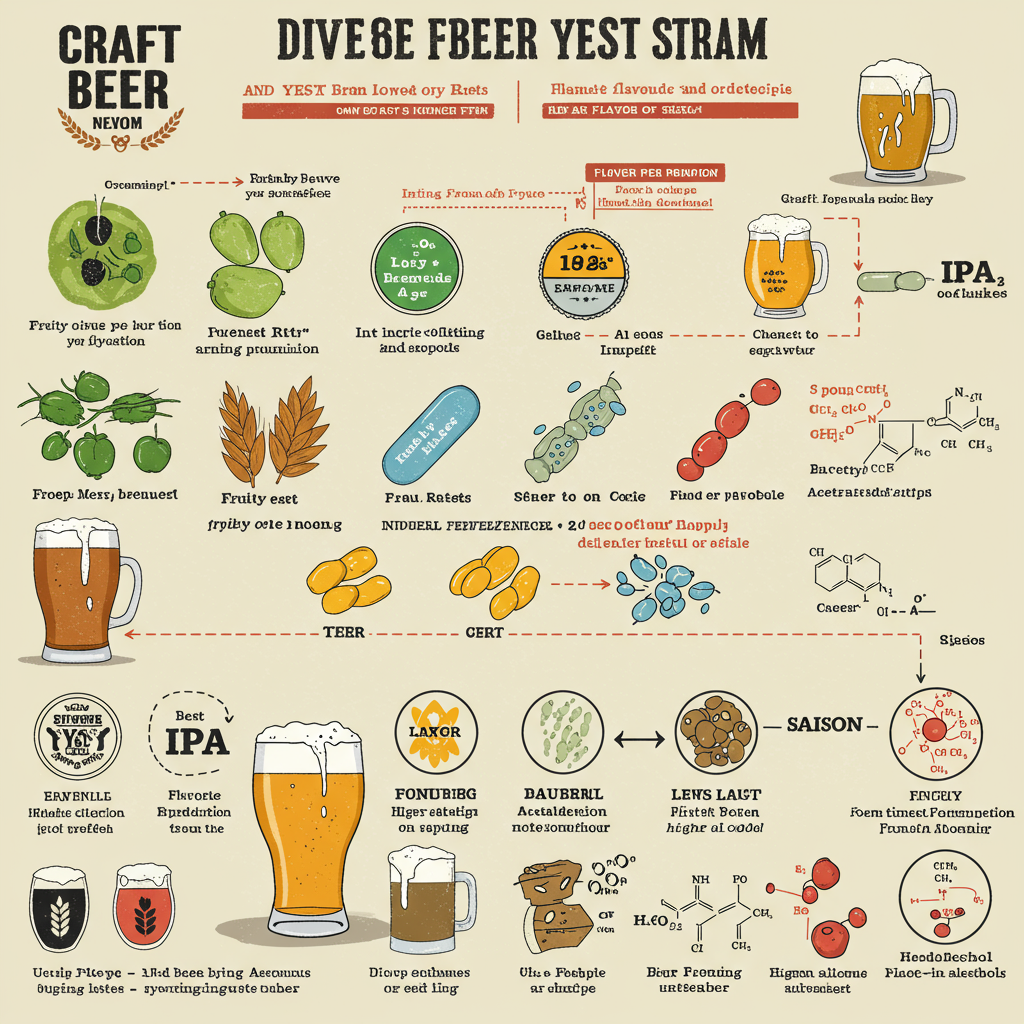Discovering Yeast: The Unsung Hero of Craft Beer
Within every glass of craft beer, a microscopic marvel is at work, quietly steering the course of fermentation. Yeast, those tiny single-celled organisms, are the unsung heroes turning sugars into the alcohol and carbonation that define our favorite brews. At BreweriesNearMe.us, we celebrate these invisible champions that infuse layers of complexity into every pint, producing flavors that can range from blissfully delicious to occasionally peculiar.
The journey of yeast in beer making is nothing short of magical. As we delve into this world, prepare to uncover the alchemy happening in your local brewery’s fermenters and learn why yeast occupies such a revered place in the craft beer realm.
The Good: Yeast’s Delightful Contributions
Yeast truly comes to life in many beloved beer styles, adding an array of enticing flavors. Fruity esters are among its finest gifts, with yeast creating delightful notes like ripe banana in a German Hefeweizen or subtle pear in a classic British ale. These flavors are the result of natural ester formation during fermentation, elevating the beer’s aroma and taste, drawing enthusiasts back for pint after pint.
Phenols, another fascinating yeast byproduct, lend spicy notes like clove or black pepper often celebrated in German wheat beers and Belgian ales. These compounds deliver a nuanced warmth that perfectly complements malt sweetness. Additionally, the comforting, bready essence from yeast in unfiltered brews offers drinkers a fresh-baked flavor that speaks to the beer’s artisanal roots.
The Bad: Yeast’s Missteps
Even the best yeast can encounter hiccups that lead to unwelcome flavors. Diacetyl, for example, can impart a buttered popcorn taste, suggesting the fermentation process wasn’t completed carefully. While a hint of this might be tolerable, in excess, it can overwhelm the brew’s intended profile, causing a heavy, cloying finish.
Another challenge comes from acetaldehyde, which can make beer taste like green apples, indicating fermentation wasn’t completed or was rushed. Similarly, a sulfidic aroma—reminiscent of rotten eggs—suggests stressed yeast, often due to poor conditions. These flavors signal something went amiss during the brewing process, detracting from the beer’s character.
The Ugly: Yeast’s Nightmares
When yeast falls short, some truly undesirable flavors can emerge, marking a brew as problematic. Autolysis, where dead yeast cells release off-putting flavors akin to soy sauce or meat, presents one such issue, often due to beer sitting on the lees too long in warm conditions.
Unintended sourness, reminiscent of vinegar or a cheesy aroma, is another serious flaw, typically due to wild yeast or bacteria infiltrating the brew—an indication of poor sanitation. Similarly, a solvent-like taste, smelling of nail polish remover, can occur when fermentation temperatures soar too high, overtaxing the yeast. Such flavors should be avoided at all costs, as they mar what should be a pleasing sip.
In the diverse world of craft beer, yeast’s role is pivotal in crafting either sublime or less desirable flavors. By understanding these influences, beer lovers can appreciate the vibrant spectrum of beer profiles yeast helps create. Cheers to happy, healthy yeast, ensuring only the best in every pint!
#CraftBeerRevolution #YeastMagic #BreweryTouring #LocalBrews #FlavorExploration




